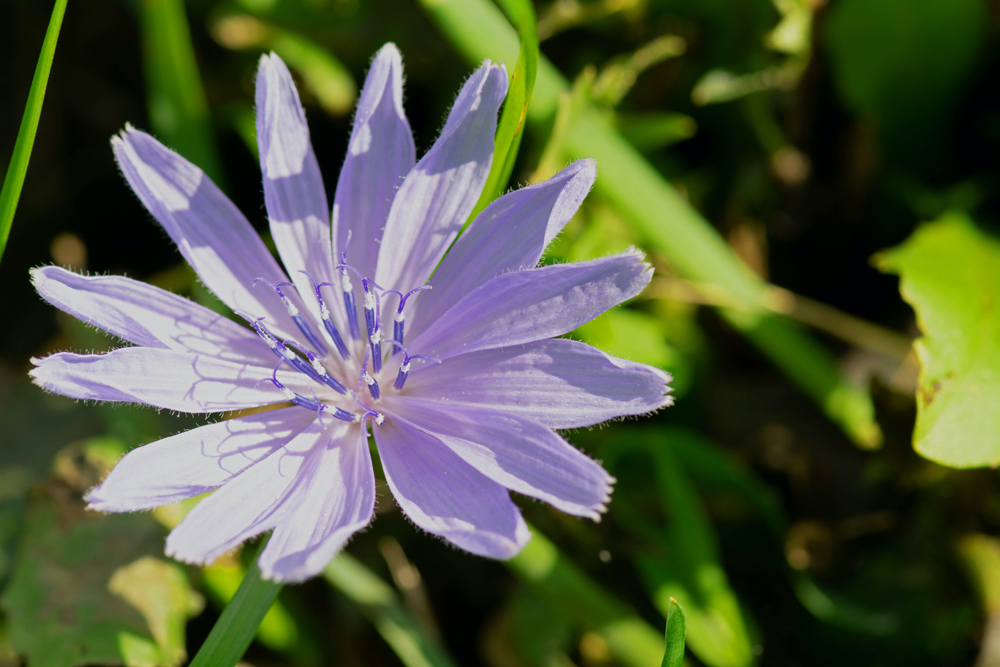The wild Cichory has many names according to Publication 505 Ontario’s Weeds published by the Ontario Ministry of Agriculture and Food. It has been called Blue daisy, Blue sailors, Coffee-weed, Common chicory, Italian dandelion, Magdeburg, Radichetta, Wild succory and Witloof among others. While I have always liked the flower, I haven’t added it to the garden because of the weedy plant that supports it. A colleague suggested though that since there aren’t any blue Lilies that we are aware of, I might try cross pollinating a white Lilly with the pollen from the Chicory. Haven’t tried it yet.
When the flower started to bloom this summer I was again captivated by the pretty blue colour of the flower. So I decided to look it up.
Did you know that there are varieties of the plant that are widely cultivated in Continental Europe. While used in great part as a coffee substitute or additive and in naturopathic medicinal preparations, the leaves of some varieties are used as greens for salads. The leaves have to be blanched first under inverted flower pots or boxes as is done with endive. Blanching removes the bitterness.
For coffee substitutes or additives, the roots of many are dug up, washed, ground or chopped up, spread on cookie sheets and roasted in a warm oven until coffee brown and we are told that wild Chicory can be processed in the same way. From descriptions of the brew that I have read about in war year publications, I’m not sure that I want to give the brew a shot, but the greens sound interesting. Blanching the leaves though is key.
by Bruce MacNeil
Originally published August 9, 2010
